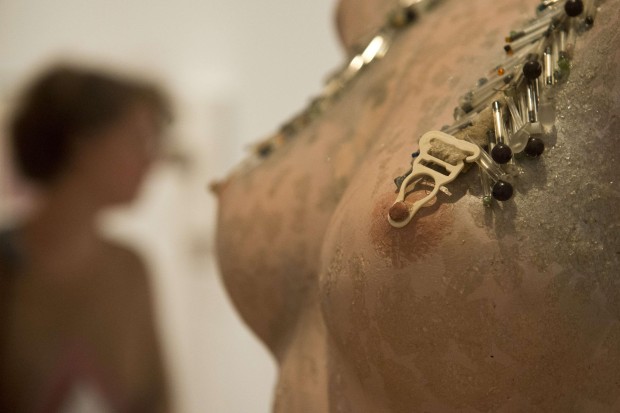Meret Oppenheim Retrospective in Berlin
[widgetkit id=13661]
The nickname “muse of the surrealists” is one of the most stupid and demoting denotations ever found. In fact Meret Oppenheim was the incorporation of a surrealist artist, poet and an ikon herself. A description of her artist spirit in her own words:
“Every idea is born with a form. You never know, where the ideas come from: they bring their form with them; just as Athena sprang out of the head of Zeus, thus do the ideas emerge with their apparel.”
When she was posing for Man Ray in 1933 Meret Oppenheim was 20 years old. She was the daughter of the German physician Alphons Oppenheim and his Swiss wife Eva Wenger, her grandmother Lisa Wenger, was pone of the first women, that had studied at the Düsseldorf academy of Fine Arts. Born in Berlin, but raised in South Germany and Switzerland Meret was the child of an enlightened family. Still she knew, that as a female artist you have to fight. “Freedom isn’t given to you, you have to take it” was her resume in 1975.
Breakfast in Fur was her first work, that gained international recognition. The work’s concept originated in a conversation among Oppenheim, Pablo Picasso, and his lover and fellow artist Dora Maar at a Parisian Café, where the café’s social role was discussed. Oppenheim was wearing a fur-covered brass tube bracelet, the pattern of which she sold to the fashion designer Elsa Schiparelli. Picasso had suggested that anything could be covered in fur, and Oppenheim remarked that this would apply to “even this cup and saucer”. Oppenheim created and exhibited the work as part of André Breton’s first exhibition of surrealist sculpture (Exposition surréaliste d’objets), held at the Galerie Charles Ratton in May 1936. Alfred H. Barr jr. then displayed the work as part of the “Fantastic Art, Dada, Surrealism” exhibition of winter 1936/1937 at the Museum of Modern Art in New York City, whose visitors selected it as “the quintessential Surrealist object.” Barr afterwards purchased it for the museum, where it remains in the permanent collection. In the same year she had her firs solo show in Basel at the Galerie Schultheiss.
Her Lover Max Ernst made the following comment on the invitation cards:
“She is the living example of the old saying. The woman is a sandwich filled with white marble. Who hands you the Soupspoon covered with rusty red fur? Little Meret. Who has outgrown us? Little Meret….”
Oppenheim is fleeing from Paris and out of the relation with Ernst. She starts studying art restoration and conservation at the General Trade school and has contacts to the anti-Fascist artist association “Gruppe 33”. Nearly 20 years had to pass until Oppenheim could connect to her early success. She married the trader Wolfgang La Roche, did long cruises with him on a Harley Davidson, being stuck in a creative crisis. In 1954 she moved on and opened up her own studio in Bern. Reconnecting to her Parisian days she blooms as an artist and poet in a fruitful mixture out of genius and female maturity.
“Without me anyway without way I came near….” could be the title of her cryptic Self-Portraits, that somehow sum up the miracle of this fascinating artists. As a German speaking kind of Becket-mind she created dazing ambivalences breathing a strange kind of wisdom. When she received the Basler art price in 1975 she gave an enlightening glimpse of her self-perception. Men would project their female sides on woman to despise them, while women would project their male parts on men to glorify them. The real spirit integrates male and female parts and get’s androgyne she claimed. An Ikon that got an icon, fascinating in far away absence.
The retrospective was shown in Berlin Martin-Gropius Bau (14.08.13-06.01.14) on behalf of Oppenheims 100th birthday 6th of octobre 2013. The artist died 15th of November 1985 of a heart attack in Basel.

